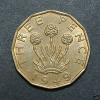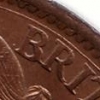Well, "matte" is generally attached as descriptor to a proof coin. However I can think of a couple of instances where it IS attached to specimen - although it is used in that instance somewhat interchangeably with "satin".
These would be the 1920 satin specimen/proof (and sometimes then also termed "matte") shilling, florin and half crown - there are presumably but unseen 3d and 6d and have usually been also described as presenting with ducktail milling.
1922/1924 satin specimen/proof coins (sometimes called "matte") 1/4d through half crown with only the penny dated 1922 & the rest 1924
1942-1945 threepence through half crown silver - called (satin) specimen but not usually "matte"
1965 Churchill satin specimen crown (this is usually NOT referred to as "matte")
As far as difference between specimen and proof, well, there seems to be changes in definition over time and differences between cataloguers and individuals but has always been my understanding much as Peck outlined; to the best of my knowledge there are no die studies linking the proof to specimen crowns of 1935. No known matte proofs of the crown, specimen or proof (the 1935 Jubilee medal DOES come in "matte" however). The 1902 set of coins have been termed "matte" and usually then described as proof, but at one time as "specimen".
 Coinpublications.com
Coinpublications.com



